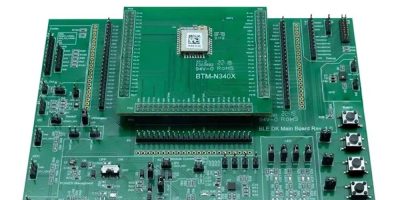Mouser has announced a new global distribution agreement with Ambiq, a leading supplier of low-powered, AI-enabled microcontrollers for wearables, hearables, IoT, edge devices and mobile edge computing applications.
“We are pleased to announce our partnership with Ambiq, which furthers our commitment to providing the latest products and technologies to our customers worldwide,” said Kristin Schuetter, Vice President of Supplier Management at Mouser Electronics. “We look forward to providing engineers and buyers worldwide with their innovative embedded solutions, backed by Mouser’s best-in-class logistics and unsurpassed customer service.”
“Mouser is well-known for its worldwide distribution and support system,” said Mike Kenyon, Vice President of Sales and Business Development at Ambiq. “We are excited to enter into this relationship. With distribution through Mouser, we can draw on their expertise in delivering leading-edge technologies and expand our global customer base.”
Among the Ambiq products now available from Mouser are the Ambiq Apollo4 Blue Lite system-on-chip (SoC) and the Ambiq Apollo4 Blue Lite evaluation board. The Apollo4 Blue Lite SoC features a 32-bit Arm® Cortex®-M4 core with a Floating-Point Unit, along with a Bluetooth® Low Energy 5.1 radio with robust RF connectivity. This SoC is ideal for use in battery-powered endpoint devices, including smartwatches, fitness bands, animal trackers, voice-activated remotes and digital health products. The Ambiq Apollo4 Blue Lite evaluation board offers a complete demonstration and development platform for the Apollo4 Blue Lite device.
Mouser also offers the Apollo3 Blue Plus evaluation board and the Apollo3 Blue Plus SoC. The Apollo3 Blue Plus device is based on Ambiq’s Voice-on-SPOT (VoS) platform, making it the perfect microprocessor for enabling always-on voice assistant integration and command. The Apollo3 Blue Plus evaluation board enables quick and easy prototyping of the SoC. The Apollo3 Blue Plus Voice-on-SPOT kit, also available from Mouser, facilitates demos, evaluation, and the development of ultra-low power audio and voice capabilities on the Apollo3 Blue Plus SoC. The kit provides always-on voice capability with options for one or two microphones, signal processing, wake word/command detection, codec, and Bluetooth Low Energy communication.
The Artasie AM1805 evaluation board offers an easy method to measure and evaluate Ambiq’s AM18x5 real-time clocks. The evaluation board includes on-chip oscillators to provide minimum power consumption, full RTC functions including battery backup and programmable counters and alarms for timer and watchdog functions, and a PC serial interface for communication with a host controller.
To learn more about Ambiq products available from Mouser, visit https://www.mouser.com/manufacturer/ambiq/.







